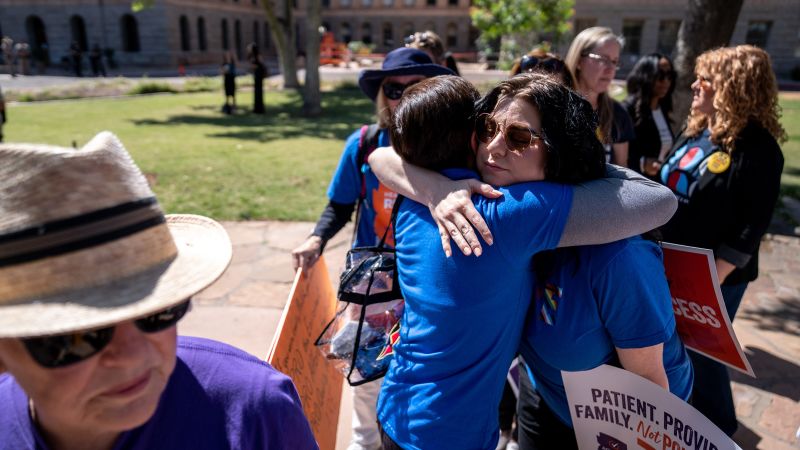It’s jarring to think that Arizonans today – thanks to a new state Supreme Court ruling – will soon be living under an abortion law from when Arizona was a frontier territory and that predates the light bulb and antibiotics.
But this is actually exactly the type of law that Supreme Court Justice Samuel Alito referred to in the majority opinion overturning Roe v. Wade in 2022.
“Roe’s failure even to note the overwhelming consensus of state laws in effect in 1868 is striking,” Alito’s majority wrote, noting the year the 14th Amendment was ratified. It was under the 14th Amendment that the court in 1973 created a woman’s constitutional right to obtain an abortion until a fetus was viable outside the mother’s womb. It was in citing laws like that of the Arizona frontier that the court in 2022 took that national right away.
Laws from the 1860s in states and territories like Arizona, enacted decades before women in the US had won the right to vote, helped lead the 2022 Supreme Court to the “inescapable conclusion … that a right to abortion is not deeply rooted in the Nation’s history and traditions.”
And so, with the Dobbs v. Jackson Women’s Health Organization decision that replaced Roe, justices turned away from the ’70s idea that women should have certain rights and returned to the 1860s idea that states should have them instead.
The patchwork of access created by the Dobbs decision has created abortion rights states and abortion ban states. The decision by Arizona’s state Supreme Court to return to the 1864 law is just the latest evidence of the tortured fallout.
The patchwork approach to abortion access was blessed this week by former President Donald Trump when he promised to stay out of states’ way if reelected.
…
Read the full article here





